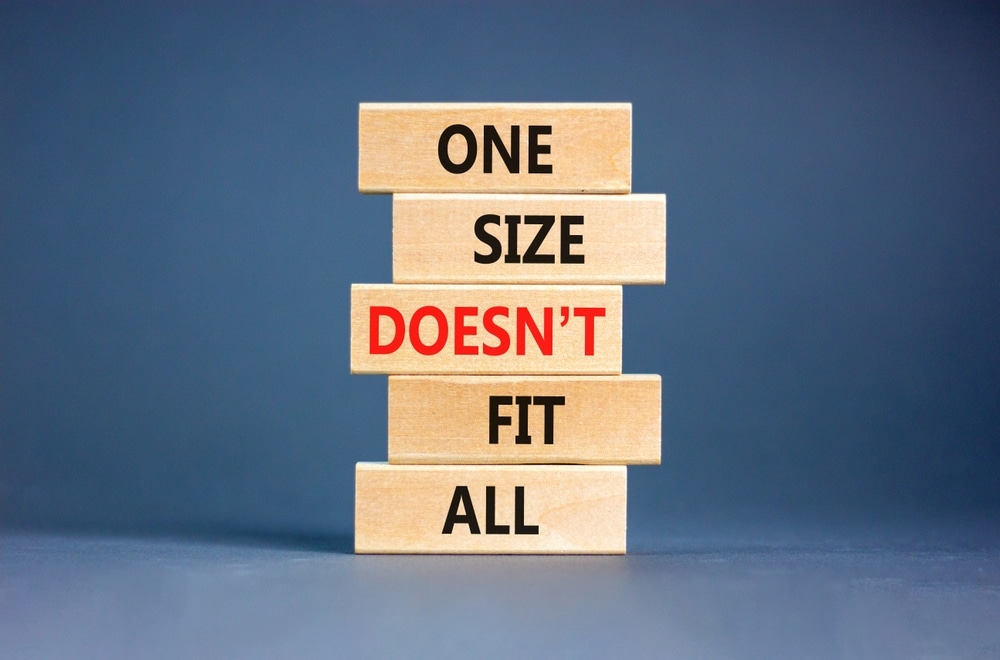Owning and operating a business is more complex than ever. In addition to delivering the best for your customers and clients, competition gets fiercer all the time. You want to grow, but you also may not have all the resources, time, and team it takes to stay one step ahead.
Incorporating integrated payments with your business is a way you can stand toe-to-toe with the biggest players in your market, and it’s simpler than many business owners expect.
The fact of the matter is, if you aren’t incorporating a modern, seamless payment system in your business, you run the risk of falling behind.
The good news? It’s not too late to get up to speed.
The better news? Getting started right now can be simple, and the benefits of integrated payments can deliver exponential opportunities for growth, differentiation from competitors, and an exceptional experience for your clients and customers.
Read on to understand why customers today expect—and deserve—the simplicity and seamless experience integrated payments deliver. You’ll understand not just why your business should utilize integrated payments—but also the dangers of not using it.
Finally, you’ll learn practical steps to implement integrated payments, and hear from business owners who took the plunge—and reaped the benefits.

Let’s dive in and explore everything you need to know about integrated payments and why they are fundamental to growing a successful business.
Start by understanding what integrated payments are—and what they are not.
The easiest way to explain integrated payments is this: it’s a way to handle payment processing for small businesses. But beyond simple point of sale transactions, it’s a system that enables you to accept electronic and card payments, and works directly with your business management software.
It’s not just about making checkout easier. It can help streamline many of your business operations and give you more opportunities for growth.
- Simple Payments: Clients can pay for services and products directly through your website, app, or in your store. That means a faster, easier customer experience that’s consistent online, offline, or on the go.
- Inventory Management: Every transaction can automatically update your business’s inventory. So keeping track of what you have in stock—and what you need to order—is simpler than ever.
- Data Insights: See what’s selling, and what’s not. Gain insights into what your customers and clients want more of—and make informed decisions that translate into growth.
For fitness centers, this could mean managing membership payments, and seeing what classes your members want more of. For a vet, integrated payments can help you understand patient lifetime value—and clearly track revenue per visit. For a spa, it could result in streamlined bookings and staffing—and more satisfied clients..
No matter what your business offers customers and clients, integrated payments can make your systems run more smoothly.
And while some small businesses may want to avoid credit card processing fees, but it’s important to look at the big picture. When you look at all the benefits to your business and your customers, a small percentage of revenue going to card payment processing companies won’t seem like a roadblock.
Beyond transactions, integrated payments help small businesses understand sales trends, provide better service, and put you on equal footing with the largest players in your market. Plus, by making your payment process more efficient, you can focus on what you do best: making customers and clients happy.

Fact: Your customers will notice if payments aren’t seamless and simple
Right now, your clients and customers expect the same convenience and efficiency from you that they experience from companies like Amazon, Spotify, Venmo and their bank. If you don’t believe you are competing with the Amazons of the world, let’s stop for a moment. Imagine a new bank was launching. How well would this bank do if they didn’t offer online payments, EFTs and full service in their app. What if they didn’t offer customers a debit card? Imagine if deposits and withdrawals meant having to go to their branch, stand in line, and wait for a person behind a glass to help you.
Obviously, this bank wouldn’t attract much business.
Customer expectations of seamless efficiency across all kinds of businesses is often referred to as “Amazonification”. It means that service, speed, convenience, and attentiveness have become the norm across many industries. It also means small businesses must adapt by implementing integrated payments to meet these expectations—and not fall behind.
And if you think it’s just about credit cards, think again. Online payments and mobile payments make up a huge percentage of transactions. In fact, a recent study stated how forecasts show the total transaction value by the end of the year will be $6.68 trillion. $4.195 trillion will come from Digital Commerce and $2.489 trillion will come from Mobile POS Payments.
If this all sounds intimidating, take a second and relax. It doesn’t mean you have to be as big or complex as Amazon. Far from it. By adopting integrated payment solutions, your business can offer the same level of seamless service as the best businesses on earth. It’s what your clients expect. It’s what they deserve. And it’s what you can offer thanks to integrated payments.
Reduce errors, save time and increase growth with payment processing for small businesses
Any and every business can benefit from simplified transactions, efficient scheduling, and more accurate financial tracking.
The right system will do all the hard work for you and your team—and make running your business easier.
- Save Time: Automated processes reduce hours wasted on manual data entries, allowing you to focus more on service, quality, and growth.
- Increase Accuracy: With integrated payments, the risk of errors goes down significantly, ensuring accurate bookkeeping and records.
- Deepen Security: Enhanced security features protect both you and your clients from fraud—providing more peace of mind.
- Avoid Costly Chargebacks: Reduce your risk of financial repercussions from chargebacks to your business.
Whether you need to automate recurring payments, make POS transactions easier, increase customer trust or just have fewer administrative headaches, integrated payments can deliver the solutions you’re looking for.
With integrated payments, the efficiency, security, and convenience create a win-win-win scenario for you, your employees, and your clients.
A hard truth: Without integrated payments, your business will fall behind

We’ve talked about how integrated payments can be a game-changer for small business owners—significantly saving time and money while delivering a better customer experience. Now let’s discuss the hidden costs of NOT using integrated payments. The price can be steep—and really hurt your business.
Not incorporating integrated payments means wasted time, lost opportunities and a higher cost of doing business. Manual transactions, ordering, and scheduling will all be more inefficient and time-consuming.[Text Wrapping Break][Text Wrapping Break]Without integrated payments, transactions will always be slower and inventory management will be harder. The risk of error increases—so staff satisfaction and performance can suffer. That means worse service, increased hassles, and unhappy customers.
Remember the bank we talked about earlier? It wouldn’t stay in business very long.
Increased competition. Steeper customer expectations. Supply chain issues. Whether it’s missed salon appointments, lapsed gym memberships—or just not offering the treatment a client is looking for in your spa—things are hard enough today for small businesses to survive and thrive.
And the sad truth is that many don’t. Not incorporating integrated payments with your systems could be the difference between growing your business—or closing up shop.
But take a breath. If you’re a small business owner who understands the value of integrated payments to you and your customers—but doesn’t know where to begin or what to choose—getting started is not as difficult as you may think.
The best small business payment processing choice for you: A practical guide to getting started
It’s no question that integrated payments are a smart move for small business owners, The next question is this: which solution should you choose?
Every business is unique—with its own challenges, expectations, and goals. So choosing the right integrated payment system is as important as the decision to use them in the first place.
To start, ask yourself what kind of transactions you need to process. Do you need to manage recurring payments like gym memberships? Are retail products integral to your bottom line—like a salon’s hair products? Do you need transactions to sync with patient appointments and records for veterinary visits?

Choosing a system designed with your specific business type in mind will eliminate a lot of challenges and headaches. Many one-size-fits all payment systems force owners to settle for what they offer everyone—without customizing the solution to specific business needs.
Think of it this way: It’s not about choosing the best payment processing for small business. It’s about choosing the best payment processing for YOUR small business.
The best advice? A system designed for your business will be easier to implement and deliver more benefits than an off-the-rack offering.
That’s where DaySmart can help. Our entire mission is to develop and deliver software solutions designed for specific kinds of businesses, so it’s easier for you to thrive and grow.
We appreciate that a doggie daycare is different from a body art studio. That a day spa faces challenges a veterinarian doesn’t—and vice versa. A one-person barber shop has different needs than a small chain of mani-pedi salons. That’s why our integrated payment solutions are tailored to your business.
How to begin?
- Visit DaySmart.com: Explore the website to understand how integrated payments can benefit your specific type of business.
- Explore Your Solution: DaySmart offers different solutions for different industries. Find the one that best fits your business needs.
- Get in touch with a DaySmart Expert: Learn more about DaySmart Integrated payments and if it’s the right fit for your business.
If you want to be more efficient, have fewer administrative hassles—and enjoy more opportunities—DaySmart integrated payments can help.
Learn from other business owners who’ve been there
You don’t have to look too far to find small business owners who are glad they’ve made the switch to integrated payments.
Jason Anderson of Wet Paws Mobile Pet Grooming sees value from integrating his payment system with his scheduling and customer data—and the ability to store and track customer cards for easier payment simplifies everything. As Jason explains, “Since we are 100% mobile groomers, we use the app exclusively…Do I want five platforms to manage and keep in sync, or just one?”
Ursula Augustine, owner of Ursula’s About Phace Rittenhouse Makeup Studio was able to concentrate on delivering the best service to her clients instead of getting bogged down in complicated systems not suited to her business. In addition, Ursula said, “I’m not great with technology, so it’s reassuring to know that I can always call in and have a human being help me with an issue.”
Having a seamless integration of payments also helps Public Services Superintendent, Mike Cresap at Plano Sports Authority, manage his parks and recreation center. “In 2010 over 85% of our administrative work was done face to face, requiring staff to explain programs, review schedules/locations, register users, and take payments. Today less than 15% of that work is done face to face. Using the DaySmart Recreation customer portal. Users can research programs of interest, consider a schedule that suits their lifestyle, then register and pay, online.”
Making the switch to integrated payments is a smart move for any small business. An even smarter one? Choosing a system that’s part of a complete, seamless suite of software that helps you run every aspect of your business—and is designed especially for your business’s unique needs.
The bottom line? Integrated payments are essential for any small business to succeed
We hope you’ve learned more about the benefits of integrated payments. How it can deliver a better experience for your clients and customers—and how it can make transactions, inventory, bookkeeping, and customer management easier for you and your team.

And more than just learning WHY integrated payments are a smart decision for any small business, we talked about what to look for in yours—and outlined some steps on HOW to get started.
Know this: it’s never too late to make the decision to incorporate integrated payment processing with your business.
What’s more, integrated payments will help level the playing field between you and the biggest companies on earth—and it’s easier than ever to launch.
Think of the bank we imagined before. The one that doesn’t offer electronic transactions, debit cards, or an app to manage customer accounts. Ask yourself: is that a bank you would want to do business with? Now think of your customers. If you don’t offer integrated payments to make things more convenient for them—your competition already does.
Want to learn more right now? Fill out the form to get a demo of DaySmart Payments integrated with a software solution built for your business!

